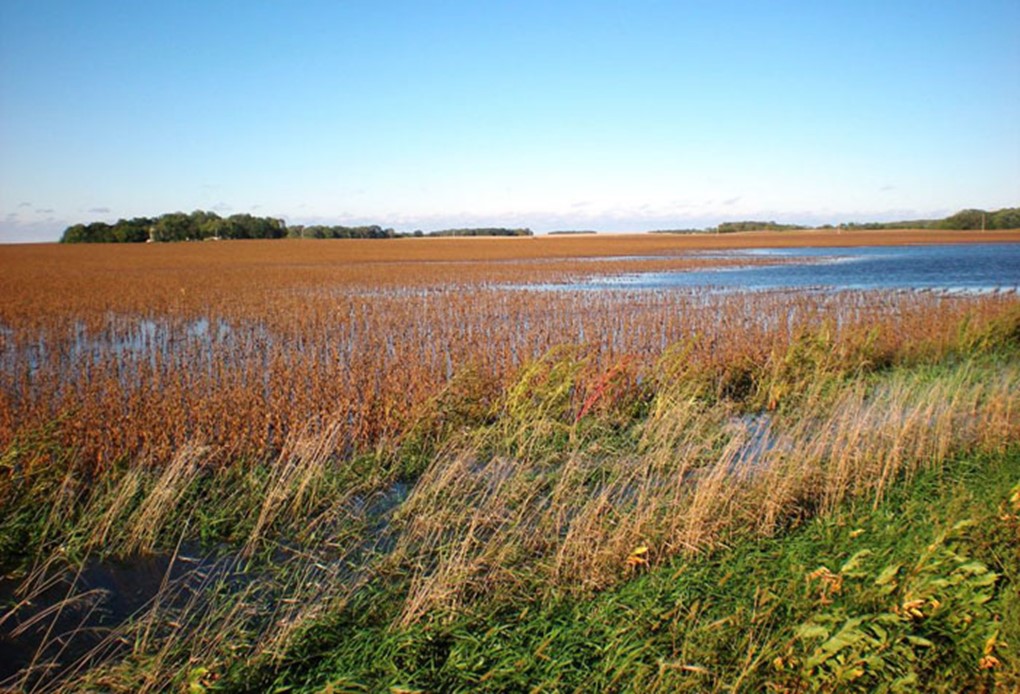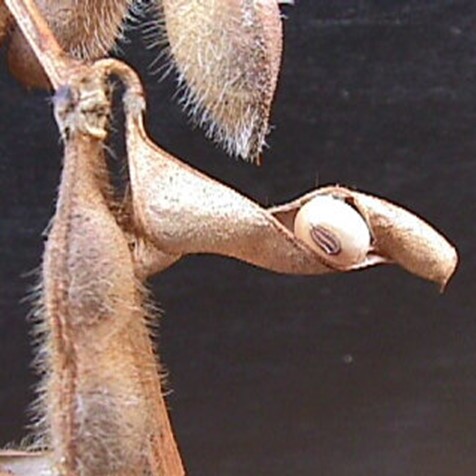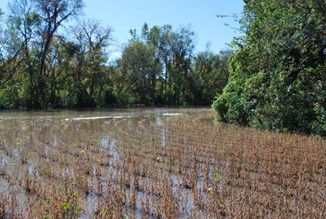Heavy rainfall in late summer and fall occasionally leads to flooding of soybean fields at or near crop maturity. The extent of crop damage depends on stage of maturity, depth of flood waters, period of flooding, amount of lodging caused by flowing water, and other environmental factors. This Field Facts will discuss fall flooding damage to soybeans.

Types of Flooding Damage
Soybeans are very susceptible to flood damage in the fall, with lodging, shattering, and low-quality grain being the most likely issues. Yield may be reduced by each of these problems.
Lodging - Soybeans have little resistance to flowing water, so lodging is a likely result where water rapidly enters or leaves the field. Even non-flowing water can kill or weaken roots and leave soybeans susceptible to future lodging.
Shattering - When soybeans are mature, splitting of pods and loss of seeds (“shattering”) increases with repeated cycles of wetting and drying. Prolonged wetting due to submersion may amplify shattering losses.
Grain quality reductions are inevitable with prolonged submersion of soybean pods. Issues include:
- Sprouting in the pod if soybean seeds have dried below 50% moisture and imbibe water to increase back above 50% moisture (soybeans are very near to 50% moisture at physiological maturity, or growth stage R7).
- Diseases may be introduced into pods and seeds by flooding. Diseased and discolored soybean seeds can incur dockages at the elevator.
Yield losses can result from several factors:
- Shattering before or during harvest
- Severe lodging that limits harvest of plants or pods
- Silt and debris that reduce harvest of lower pods
- Sprouting and diseases that reduce seed weight
- Damage to soybean plants prior to maturity, resulting in smaller seeds (see Appendix 1.)
Management of Flooded Soybeans
Scout fields thoroughly to identify the type and extent of flooding damage. Continue monitoring fields closely through- the pre-harvest period to optimize harvest timing and minimize yield and quality losses.
Manage field areas separately - Most fields will not be uniformly affected by flooding. Where practical, consider harvesting flooded and non-flooded field areas separately, as one harvest date may not be optimal for the whole field.
Separate grain from flooded and non-flooded fields or field areas, as quality, storage life and marketing channels may be very different from these sources.
Early harvest - Fields with severe flooding damage will likely benefit from early harvest to avoid further shattering, lodging and quality problems.


Shattering in soybeans due to repeated wetting and drying.
Delaying harvest of minimally damaged fields is a viable strategy for preventing or reducing soil compaction. Allowing fields to dry adequately to minimize compaction must be balanced with the risk of harvest losses.

Pursue crop insurance claims for heavily damaged fields or field areas. Contact your crop insurance provider before harvesting field so he can submit a notice of loss. It will be important to clearly document any flooded areas for insurance or disaster relief assistance claims.
Storing Flood-Damaged Soybeans
A general rule of grain storage is to avoid mixing mix good quality and poor-quality grain. This is especially true for soybeans with quality deterioration due to flooding. Sprouted, disease damaged, and discolored soybeans may lower soybean grade and incur dockage at the elevator. These quality impairments will also lower storage life, often significantly.
To help prevent contamination and extend storage life, clean bins, areas around bins and all grain handling equipment before putting grain in storage. Aerate grain to equalized temperatures throughout the grain mass. Hot spots need to be eliminated by stirring and cooling or removing grain from the bin.
A normal soybean crop should be at 13% for a 6-month storage period, and 12% for 12 months of storage. For lower quality soybeans, experts suggest drying grain one or two points below that required for a normal crop, monitoring grain closely while in storage (at least twice monthly), and in some cases, storing this grain for only six months rather than a year.















